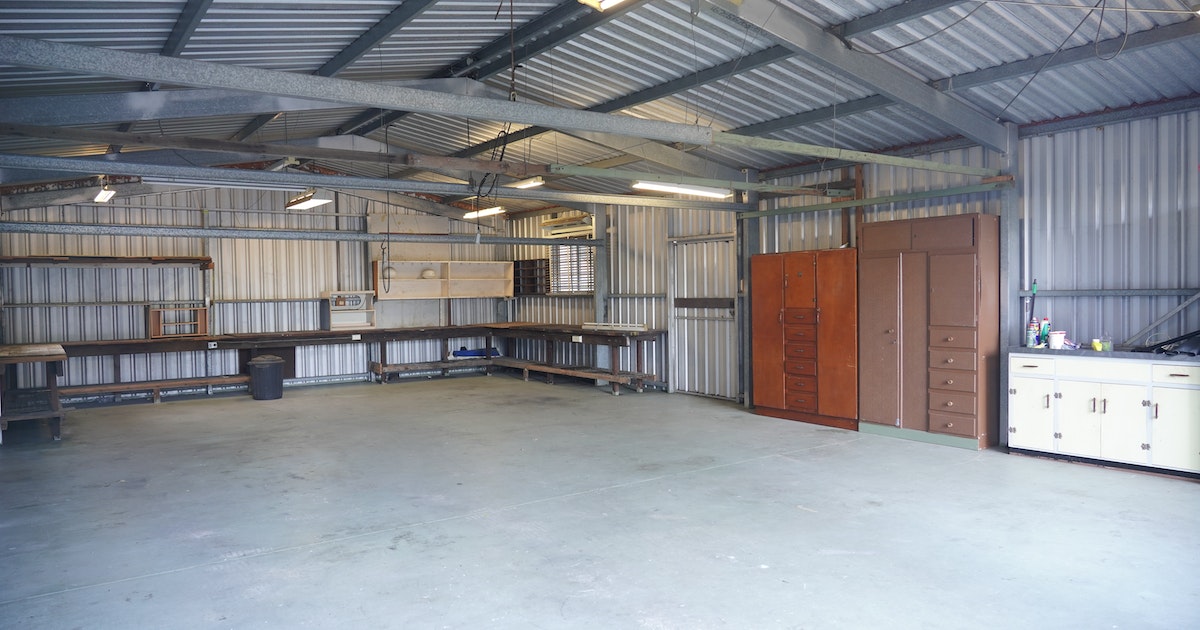Before we get into the prevention methods, it’s best to understand the enemy: rust. Rust, scientifically known as iron oxide, is a corrosion process that happens when iron or steel comes into contact with oxygen and moisture. This chemical reaction gradually breaks the metal’s surface, compromising its structural integrity and aesthetic appeal. To effectively prevent rusting when storing steel, one must understand the factors that cause its formation.
How Does Rust Develop on Steel?
Rust develops through chemical reactions involving iron, oxygen, and water. This process, known as oxidation, is accelerated by salt or other contaminants. Steel, primarily composed of iron, is highly susceptible to rust. The first stage involves the formation of iron oxide, which reacts with more oxygen and water to create hydrated iron(III) oxide, commonly known as rust. This reddish-brown substance flakes off, leaving the metal underneath vulnerable to further corrosion. It’s essential to interrupt this chain reaction by minimizing the exposure of steel to oxygen and moisture.

Effective Methods to Prevent Rusting When Storing Steel
Clean and Dry the Surface Thoroughly
One of the basic steps in preventing rust is making sure that the steel’s surface is clean and dry before storage. Any dirt, grease, or moisture present on the surface can catalyze rust formation. Use a mild detergent to clean the steel and then dry it thoroughly with clean, lint-free cloths or compressed air. This initial cleaning removes contaminants, providing a clean slate for further rust prevention measures.
Apply Protective Coatings
Protective coatings are a shield against rust-inducing elements. Applying coatings like paint, wax, or specialized anti-corrosion solutions creates a barrier that prevents direct contact between the steel and moisture-laden air. Epoxy-based paints, for instance, offer excellent protection due to their ability to adhere tightly to the surface. Go for coatings designed to withstand harsh environments, especially if the steel is stored outdoors or in high-historic areas.
Use Desiccants to Control Moisture
Desiccants are moisture-absorbing substances that can be placed near or within the stored steel items. These materials help maintain a low-humidity environment, reducing the chances of rust formation. Silica gel packets, for example, are commonly used desiccants that can be strategically positioned in storage containers or cabinets. Be sure to monitor and replace desiccants regularly to ensure their effectiveness.
Implement Proper Ventilation
Adequate ventilation prevents rust, as it helps regulate humidity levels. Poorly ventilated spaces can trap moist air, creating a conducive environment for rust to thrive. Try installing ventilation systems that facilitate air circulation if storing steel in an enclosed area. This reduces humidity and prevents the buildup of stagnant air, which can increase the rusting process.
Regular Maintenance and Inspection
Preventing rust doesn’t stop after implementing initial measures. Regular maintenance and inspection are necessary to detect any signs of corrosion early. Set up a schedule to inspect stored steel items for any changes in appearance or the presence of rust spots. Promptly address any issues by reapplying protective coatings, cleaning the surfaces, and replacing desiccants if necessary.

The Role of Humidity in Rust Formation
Relative humidity (RH) measures the air’s moisture content compared to the maximum moisture the air can hold at a specific temperature. RH is expressed as a percentage, with higher percentages indicating higher moisture levels. Understanding RH is important for rust prevention, as it directly influences the rate of oxidation and corrosion on steel surfaces.
Impact of Humidity on Steel Rusting
High-humidity environments boost rust formation due to the increased moisture availability in the air. When steel is exposed to air with high RH, the moisture readily condenses on its surface, creating the perfect conditions for rust to develop. Controlling humidity levels in storage areas can greatly reduce the risk of rusting. Using dehumidifiers or maintaining a controlled RH through ventilation helps maintain a dry environment that discourages rust formation.

Effects of Temperature on Rust Formation
Temperature plays a big role in rust prevention. Higher temperatures can promote faster chemical reactions, including the oxidation process that leads to rust. Changing temperatures can also lead to moisture condensation on steel surfaces, creating an ideal environment for rust to take hold. Maintaining a stable temperature within the storage area can minimize the risk of rapid rust formation.
Best Practices for Temperature Regulation
Aim to maintain a consistent temperature within the storage space to prevent rusting when storing steel. This is done through proper insulation and temperature control systems. For indoor storage, think about using climate-controlled environments where you maintain chosen temperature and humidity levels. If outdoor storage is unavoidable, invest in weather-resistant covers and enclosures that provide some temperature and humidity control.

Choosing the Right Storage Environment
Indoor vs. Outdoor Storage
The choice between indoor and outdoor storage greatly impacts rust prevention. Indoor storage provides greater control over temperature, humidity, and exposure to the elements, making it the preferred option for valuable steel items. But, if outdoor storage is necessary, choose covered areas that offer protection against rain, snow, and direct sunlight.
Climate Considerations
The climate of your storage location should also influence your rust-prevention strategies. Areas that are humid or have frequent temperature changes require more careful measures. In regions with salt-laden air, such as coastal areas, the risk of rust increases due to the corrosive nature of salt. Additional protective coatings and regular maintenance are necessary to prevent rusting.
Preventing Rust in Steel Storage
You can prevent rusting when storing steel by meticulous cleaning, effective coatings, moisture control, proper ventilation, and vigilant maintenance. By understanding the causes of rust formation, such as humidity and temperature, and implementing targeted strategies to reduce these factors, you can ensure the longevity and integrity of your steel items. Remember, rust prevention is an ongoing process that demands consistent effort, but the preserved steel quality rewards are well worth it!
